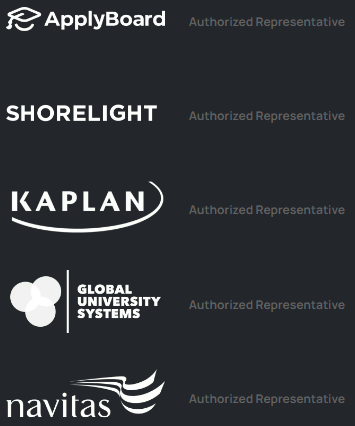Why Are Universities So Expensive in 2025 – Why does college cost so much? Numerous factors include increased demand, rising financial aid, decreasing state financing, the skyrocketing expense of administrative salaries, and extravagant student amenity packages. The tuition alone at the most costly universities, such as Duke, Vassar, and Columbia, will set you back well over $50,000 annually. Not even housing is included with that! College expenses have gotten out of hand. How, then, can you make it right?
Nothing really, but if you’re resourceful, you can find a way around it, especially with the expanding online education industry’s options. We’ll investigate the reasons behind the high expense of college and provide tips on how to save money. The staggering amount of money that student loan debt and tuition fees have reached begs the puzzling question: Why is university so expensive? The explanation is far more straightforward than you may imagine, and it stems from a few basic factors. Everything you need to know about how we got to this place, why higher education is so expensive, and what you can do about it is all here. Everybody should have an equal chance to earn a degree!

Why Are Universities So Expensive in 2025?
The cost of college and the amount owed on student loans have increased recently. From 2008 to 2020, the tuition costs have risen by an astounding 36% in the last ten years. Additionally, the median income climbed by just 2.1% during the same period, even though inflation is still a problem. Why, then, is college so costly?
There are several explanations for this, one of which is the sharp rise in demand caused by the large number of individuals who wish to attend college. Certain universities raising their fees in such a competitive market create a misleading impression of quality.
A shortage of state money, a growth in financial aid, a rise in student services, and, last but not least, a growing demand for faculty members and the requirement to give them more salary are other factors. Compared to ten years ago, the benefits of having a degree have significantly decreased due to the high expense of higher education.
What Were College Fees Two Decades Ago?
College tuition fees were nothing like today’s scenario. However, let’s see how it was earlier compared to 2024. College fees have been doubled since the 1980. The financial challenges that today’s students face are entirely unfamiliar to previous generations. Today’s students face the challenging issues of student loan debt and rising housing expenses. Many millennials struggle greatly to have the initial down payment for a home after high educational fees.
According to statistics, the price of an undergraduate degree at public universities has risen by a startling 213% since the 1980s, while at private universities it has soared by 129%. As a great deal of you already know, learning never truly ends.
Where Was the Source of This Crisis?
The hard-earned money that previous generations earned during summers allowed them to pay for education. Those from wealthier backgrounds were able to assist their kids in covering the cost of their education. However, during the past two decades, significant cuts to public financing have forced institutions to boost their tuition, leaving millennials with no alternative but to take out large debts. History is what’s left.
What Is The Average College Cost?
The true cost of a degree, even before factoring in living expenses, housing expenses, and textbook fees, may astound anyone getting ready for college.
Average Cost of Tuition
In 2017, the average cost of only tuition educational expenses was close to $7,000. When all was said and done, the average cost per semester was more than $25,000. This is obviously an extremely exorbitant amount that most students cannot afford. Remember that these figures are only for each semester thus, the average annual cost is $50,000. And that’s not the most costly college just the average!
Standard Student Loan Fees
According to Business Insider, the average debt on student loans is $29,800. These numbers don’t reflect how much students have previously paid; rather, they show the amount of debt they will have after graduation.
The Most Expensive College
Columbia University is reportedly the most expensive college in the country, with tuition for the 2019–20 school year costing more than $61,000. Not only is it not the only academic school with outrageous costs, but its location in New York City surely adds to the excessive living expense.
Which Theories Explain Why Are Universities So Expensive?
Let’s understand some reasons why is university so expensive in today’s times –
Financial Assistance
Why does college cost so much? Although it’s still debatable, some ideas contend that financial aid is to blame for rising tuition costs. Governments have responded to the growing number of students taking out loans, and colleges have begun to take advantage of this, realizing that the resources were there.
The Public Funding Isn’t Enough
According to a different theory, the increase in college tuition is because state support isn’t keeping up with the increasing number of students entering. Consequently, colleges are forced to reduce their funding for higher education, which forces them to raise tuition fees that are covered by the students themselves in order to make up for the lost revenue.
Professorial Salaries
The expense of paying someone to give pupils an education has increased in tandem with the cost of receiving an education. Highly educated individuals are needed to provide higher education, and they should be compensated more for their services.
There Is Growing Student Social Support
Many of a school’s funding is now set aside for providing other student services, like counselling and healthcare. Although students’ academic performance and general well-being greatly benefit from these services, they are also a contributing element to the skyrocketing cost of tuition.
Over Emphasis on Sports
Nearly all US universities view sports as vital. However, considering the enormous expenses they entail and the minimal educational gain, it is difficult to defend. US colleges frequently provide tuition waivers to athletes in an effort to draw them. Of course, a small number of colleges truly earn from various sports. However, this is frequently countered by the fact that football coaches earn the highest salaries in practically every state in the union.
Is Attending College Worth the Expense?
Many young adults considering pursuing both undergraduate and graduate degrees may question whether it’s worthwhile in the face of talks about mounting student debt and rising educational expenses. Based on statistics from the BLS, the data on this subject is fairly clear: graduates with bachelor’s degrees typically earn $525 more each week than individuals who only have a high school diploma.
The level of education also has an impact on unemployment rates. The unemployment rate for people with only a high school diploma is 6.2% (it can reach 8.3% for those who dropped out), whereas the rate for college graduates with a four-year degree is only 3.5%. Naturally, there are still many things to consider when estimating the possible return on investment of your degree. Investigating job opportunities in your local area and your specific field is advisable.
If not, you might not be able to obtain a position that fits your needs down the road. To ensure that you can afford your student loan repayments after graduation, it’s crucial to assess a school’s cost of attendance in relation to your anticipated future earnings. You may still give yourself the power to make wise selections that position you for fulfilling employment and financial success despite all the outside variables driving up the expense of your education.
Advice for Lowering the Cost of College
While selecting a school might be an emotional decision, it’s crucial to stand back and make sure you’re also making the right financial choice. Additionally, a few options exist to bridge the funding gap if you have your heart set on a school that would exceed your means.
Take General Education Courses at a Community College
Courses at community colleges typically cost significantly less than those at larger universities. You can focus your education spending on degree-specific courses and free up money by using a community college for your non-major programs. Even high school students who want to accelerate their college credits can enrol in some community college courses.
Some only allow you to enrol for one or two academic years before allowing you to transfer to a bigger university.
Attend a State-run School
Going to college as far away from home as possible can be alluring, particularly for those who want adventure. However, the expenditures of accommodation, transportation, and out-of-state tuition mount up. When possible, take advantage of in-state tuition savings. Consider saving money on room and board by having your family commute from home for one or two semesters if they live close to the university.
Give Public Schools Priority
Compared to many private schools, the average cost of attendance at a public, nonprofit college or university is substantially lower. Recall that the price of a school does not always correspond to its excellence. Tuition is determined by various criteria, such as marketing expenses, administrative staff, and the amenities offered by the institution. An affordable public school has the same chances of providing an excellent education as an expensive college.
Comparing College Tuition Fees of Public and Private Universities
It is mandatory for both public and private universities to declare the projected cost of attendance in addition to the tuition. It is important to compare these figures rather than just the tuition because the estimated cost of attendance typically includes accommodation and board, supplies, and fees, all of which can differ significantly between schools.
To Get Financial Aid, Submit Your FAFSA as Soon as Possible
submitting an annual FAFSA (Free Application for Federal Student Aid) application, even if you’re not sure if you meet the requirements for financial need. You might be eligible for unanticipated financial assistance from your school or the federal government. Certain scholarships also require the completion of the FAFSA.
Look Into Scholarships
Scholarships and grants are non-repayable forms of school assistance, similar to financial aid. If someone does not obtain the amount of financial aid they had hoped for, some awards are given out based on merit rather than financial necessity, which can be a viable alternative.
Why Are Universities So Expensive? What is the Solution?
High college costs are ultimately maintained by ongoing inflation, growing administrative expenses, and decreased state investment in postsecondary education. The soaring tuition and fees considerably outweigh inflation alone, despite the temptation to blame inflation alone for the high expense of a college education. Costs are also increased by overhead, a growing demand, and competing campus amenities.
There are numerous ways for students to pay for their college education, such as work-study programs, student loans, and college savings plans. Depending on their field of study and professional goals, graduates can recover part of their expenditures through student loan forgiveness programs.
Contact us to get scholarship assistance from our highly qualified admission counsellors.




